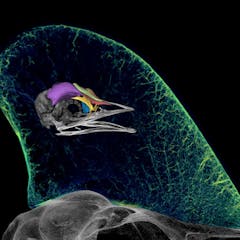
Articles on Renaissance
Displaying 1 - 20 of 29 articles

Historically, many Christians got tattoos around Holy Week − usually a cross − to honor Christ’s martyrdom.

These moving poems are a reminder that on Valentine’s Day, it’s OK to celebrate a broader definition of love.

Coral has been incorporated into traditions, art and even religion in communities around the world.

A document, which dates to 1452, shows that da Vinci’s father emancipated an enslaved woman named Caterina – Leonardo’s mother.

The press, films and series and even everyday language still reflect a derogatory conception of the Middle Ages. Was the period really that bad?

The baby drop box is a revival of centuries-old cultural practices from the Italian Renaissance when reproductive rights were zero.

With Renaissance, Beyoncé is again shaping pop culture, honouring black disco pioneers and Africa’s rise.

A folklorist explains the prehistoric origins of the mythical Easter Bunny and why this longstanding cultural symbol keeps returning each spring.

Scientists have been using art to illuminate and share their research with the public for centuries. And art could be one way to bolster K-12 science education and scientific literacy in the public.

After a year of pandemic social distancing, we know touch is a much-desired privilege. In the Italian Renaissance, people longed to touch not only each other, but also religious sculptures.

The Renaissance San Marco convent, now a museum, is where Fra Angelico lived and painted under the patronage of Cosimo de’ Medici. It was also where Savonarola proclaimed the Bonfire of the Vanities.

The first French novelist wrote about an adulterous affair and moved to Paris after separating from her husband.

The history of Italian literature cannot be understood without the vernacular poets. But their works were largely unknown until Lorenzo ‘the Magnificent’ sent a gift to the Prince of Naples.

The 17th-century plague of Italy has lessons for today: Back then, too, people broke public health laws, but there were clergymen who intervened.

Recipe sharing is all the rage in the pandemic as in other times of turmoil. English cookbooks of the 16th and 17th centuries promised recipes for comfort with a dash of glamour.

Nativity scenes showing the birth of baby Jesus first originated in the small Italian town of Greccio.

Channel 4 dating show Flirty Dancing is a reminder of the 18th century men who endured endless abuse to get Britain moving.

A new look at Renaissance paintings demonstrates the world has always been global.

Once called ‘the most important subject no one has heard of’, tribology is now a key part of the fourth industrial revolution.

A lot has been said about Leonardo and music, much of it speculation. But what do we know for sure?
